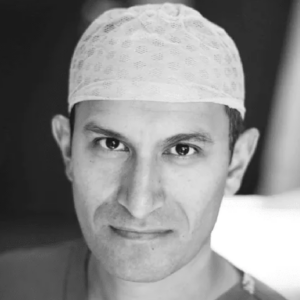A blocked tear duct, medically known as nasolacrimal duct obstruction (NLDO), is a common issue that occurs when the eye’s drainage system is either partially or fully blocked. While often more common in babies, it can affect adults, causing persistent discomfort and blurring of vision. Recognising the symptoms and understanding the treatment options are the first steps toward securing clear, comfortable vision.
At Chase Lodge Hospital, our Consultant Ophthalmic Surgeons provide rapid, specialised assessment and tailored treatments to resolve this condition, restoring the natural function of your eyes.

What is a Blocked Tear Duct?
Your eyes constantly produce tears to keep them lubricated and clean. These tears drain through tiny holes (puncta) in the inner corners of your eyelids, travel through small canals, and then pass down the nasolacrimal duct into your nose. When this duct is obstructed, tears cannot drain normally, leading to a build-up on the eye’s surface.
Recognizing the Symptoms of Obstruction
The severity of symptoms depends on whether the blockage is partial or complete.
The primary signs and symptoms of a blocked tear duct include:
- Excessive Watering (Epiphora): Tears constantly stream down the cheek, even when not crying, which is often the most noticeable and disruptive symptom.
- Recurrent Eye Infections (Dacryocystitis): Because tears pool in the drainage system, they can become stagnant, creating a breeding ground for bacteria and leading to repeated bouts of redness, soreness, and sticky discharge.
- Sticky Eye or Discharge: Pus or mucus discharge from the corner of the eye and along the eyelid.
- Blurred Vision: Due to tears continually sitting on the surface of the eye.
- Pain and Swelling: In the inner corner of the eye, where the tear sac is located, often signalling an active infection.
Causes in Adults
While blockage in infants is often due to an underdeveloped drainage system that resolves naturally, adult tear duct obstruction is typically caused by:
- Infection and Inflammation: Chronic sinusitis or frequent eye infections can cause the drainage system to swell and narrow.
- Trauma: Previous facial injuries or surgery, especially around the nose or eyes.
- Growths: Tumours or polyps in the nose or tear duct area, though rare, can block the passage.
- Age-Related Changes: Narrowing of the tear ducts over time.
Specialist Ophthalmic Treatment
Diagnosis involves a careful clinical examination by a specialist, which may include probing or flushing the tear duct to determine the location and severity of the blockage.
The treatment for an adult obstruction typically requires an expert surgical approach to reconstruct the drainage pathway.
The Definitive Surgical Solution
The most common and effective procedure for resolving an adult blocked tear duct is a Dacryocystorhinostomy (DCR).
- What is a DCR? This operation creates a new, alternative drainage route from the tear sac directly into the nasal cavity, bypassing the obstruction entirely.
- Approach: This procedure can often be performed endoscopically (through the nose), which is less invasive and leaves no visible scar, allowing for a swift recovery.
Meet Your Consultant: Ophthalmic & Oculoplastic Authority
Specialised treatment for tear duct obstruction requires the combined expertise of general ophthalmology and oculoplastic surgery. Our consultants bring both the diagnostic precision and surgical skill needed for a lasting solution.
Mr Andre Ismail

Consultant Ophthalmic and Oculoplastic Surgeon with over 4,000 cataract operations performed. He has particular expertise in eyelid and lacrimal (tear duct) surgery.
Mr Ismail’s extensive experience as an Oculoplastic Surgeon makes him an authoritative expert in the delicate procedures required to safely and effectively reconstruct your tear drainage system.
Dr Manvi Sobti

Consultant Ophthalmologist specialising in Oculoplastic and Cataract surgery. She has wide-ranging experience from international units and a focus on complex reconstruction and trauma.
Dr Sobti’s extensive training in oculoplastics and her collaborative work alongside other specialists ensure a thorough, expert assessment and state-of-the-art treatment for all eye-related obstructions.
Take Control of Your Vision and Comfort
Persistent watering or discharge can significantly impact your daily life and vision. Request a Private Ophthalmology Consultation today for a rapid diagnosis and access to effective surgical solutions.
- Call our dedicated appointments team on 020 8358 7100 or book a GP appointment online for an initial assessment and fast-tracked referral.